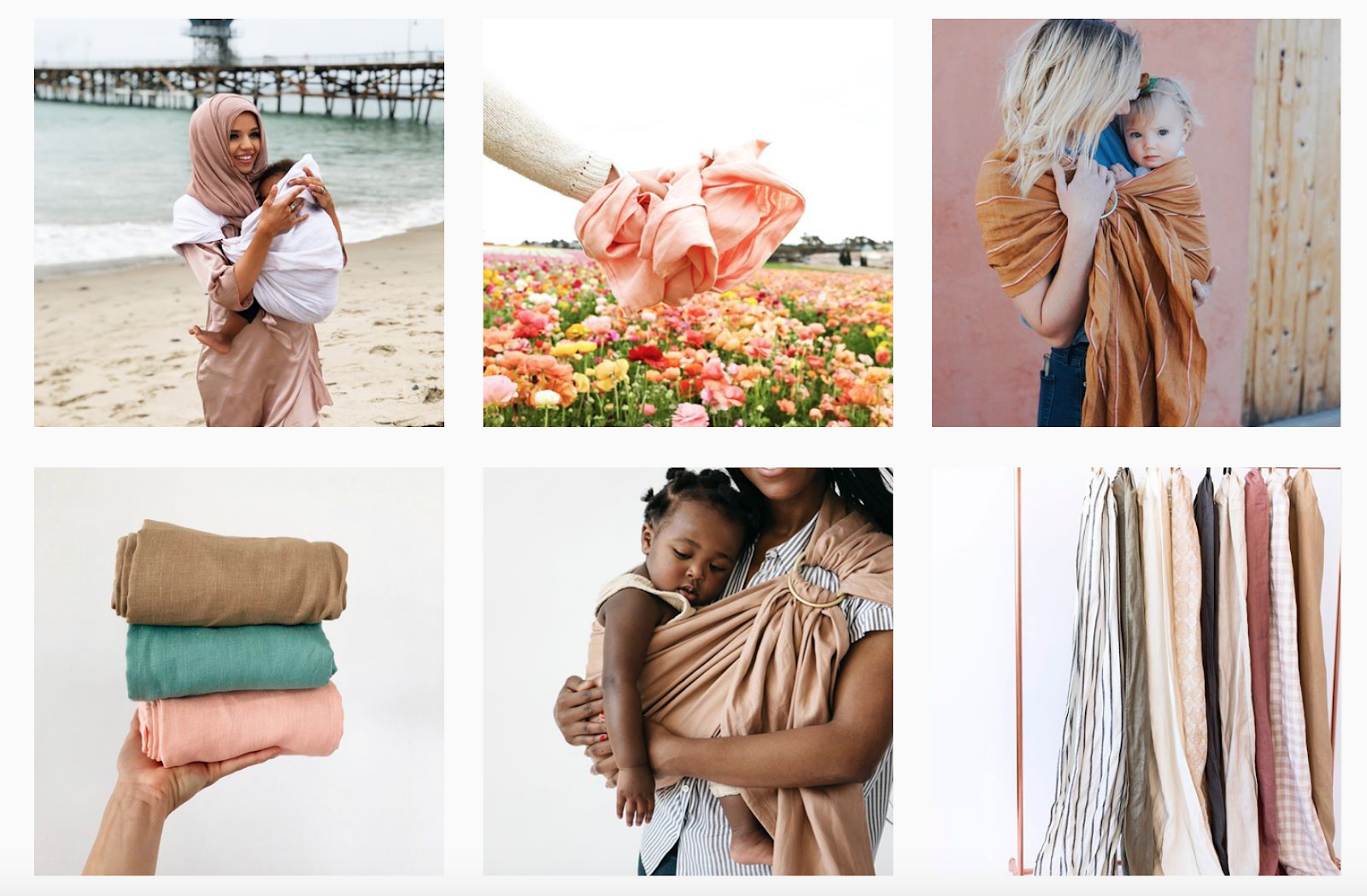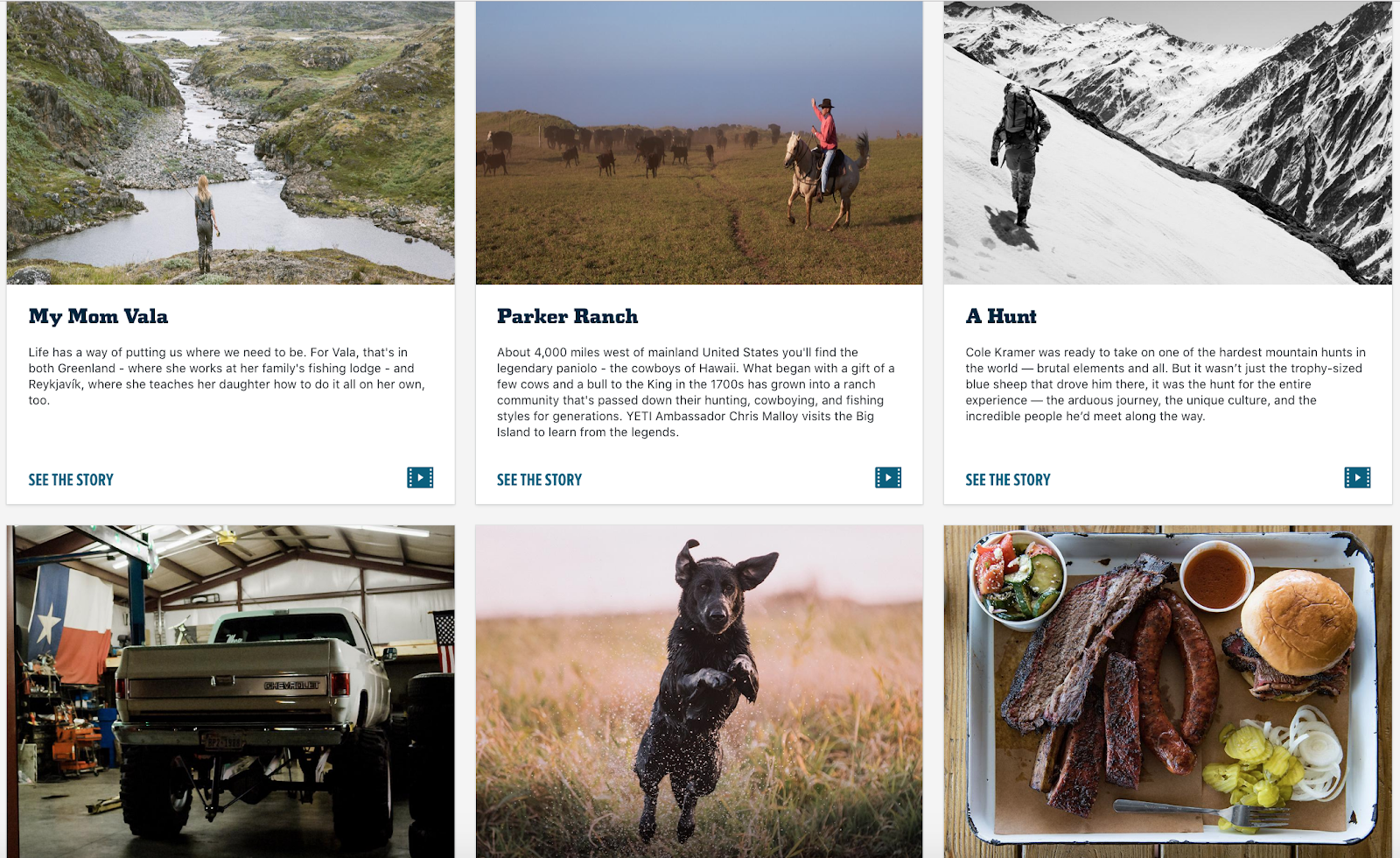The best marketers in ecommerce today are the ones who have mastered the art of storytelling. As ecommerce becomes more and more competitive, businesses have to work harder to gain the attention and loyalty of online consumers.
The marketing and advertising campaigns that used to work ten, five, and even two years ago aren’t as relevant or effective today. In 2018, people buy from companies that they feel understand them, align with their values, and support their dreams.
Storytelling helps you connect with your target audience on a personal level. Storytelling helps you differentiate from your competitors, both big and small. Storytelling helps you convince people that you’re not just in it to make a quick buck—you’re doing what you do because you care about the people and community you serve.
So as an ecommerce business owner, where do you begin?
Here are five actionable brand storytelling tips that you can use to boost awareness, fuel engagement, increase website traffic, and drive more sales for your business:
1. Craft Your Origin Story
In order to effectively stand out in a crowded market, you need to take the time to craft your origin story. An origin story helps your customers and prospective customers better understand who you are, how you got started, why you exist, who you’re trying to help, how you intend to help, and where you’re going from here.
In a nutshell, your origin story helps people understand what makes your business and products unique. It helps them begin to answer questions like:
- Why should I care about this business?
- What are the true motivations behind this business?
- Are there good people behind this business and these products?
- How do I know this is the best business to support?
- What makes this business different than other similar businesses in the market?
- Does this business align with my values and priorities?
Here are a few examples of origin stories from other ecommerce brands operating in various industries today:
- How Beardbrand became the company that fosters style for the urban beardsmen
- How Wildbird started based on a woman’s belief that babywearing can bring moms closer to their babies physically and emotionally, while giving them the freedom to take on the day
- How L.L. Bean evolved into a powerhouse outdoor retail brand 100 years after the founder returned from a hunting trip with cold, damp feet and a revolutionary idea.
To begin crafting a unique origin story for your ecommerce business, follow these tips:
- Tip #1: Document your timeline. Spend some time physically mapping the key moments, milestones, and even setbacks of your business.
- Tip #2: Define your mission. Be clear about what motivated you to start your business, and what mission is guiding your work now.
- Tip #3: Identify your characters. Help people understand who the heroes are, who the villains are, and how your customers fit into the story.
- Tip #4: Paint a clear picture. Create a compelling story by leveraging the 22 rules of storytelling as defined by Pixar.
- Tip #5: Offer a glimpse into the future. Help people understand where you’re going in the short and long-term future.
2. Know What Matters to Your Audience
Brand stories focus on values, beliefs, desires, motivations, and experiences that a group of people can relate to and rally behind. It’s the stuff that ultimately differentiates you from the other guys. It’s what makes your brand and products memorable. It’s what draws people back to you again and again.
To be effective with brand storytelling, you need to know who you are and what makes you great, but you also need to have a firm grasp on the things that matter most to your target audience.
Despite everything you’ve read up to this point, brand storytelling shouldn’t focus solely on you and your business alone—it should also be about your customers.
You can have the most eloquently written origin story and the most beautiful imagery your website visitors will see, but if what you’re showing them doesn’t align with, address, or support the things they care most about, it’s not going to matter.
To ensure that your brand stories hit the mark with your audience, ask yourself these questions:
- What does our ideal customer care most about?
- What are the pain points that they have?
- How are we addressing and solving those pain points?
- What specific beliefs and values do our customers have?
- What movements or causes do they care about?
- Why do our customers buy from us? What makes us different or better than our competitors?
Coming up with answers to these questions will help you create brand stories that attract the right people and compel them to take the actions you ultimately want them to take, whether it be visiting your website, commenting on a photo, sharing an email, or buying a product.
3. Create Lifestyle Imagery
When it comes to interacting with online consumers for the very first time, you only have a few seconds to make the right impression. That’s why visuals matter greatly for any business hoping to attract and convert customers through social media channels or their own website. People are in general not very good at quickly processing and storing text-based information—but they are much better at processing and remembering visuals.
As an ecommerce business owner, it’s up to you to create and share visuals that accurately represent your business and products while also making it possible for you to differentiate from your competitors.
To ensure that your brand and product photos don’t look like everyone else’s photos in your industry, invest in lifestyle imagery.
Lifestyle imagery leverages real people—your team, your customers, your loyal fans—to showcase your products.
Here’s an example from Wildbird, a brand that features real people and customers throughout their marketing campaigns and social media publishing efforts:
The goal with lifestyle imagery is to connect on a more personal, relatable level with your audience. That means no more stock photography. No more!
To create lifestyle photography that can be leveraged as part of your brand storytelling strategy, follow these tips:
- Tip #1: Create a visual guidelines for your lifestyle imagery. Think about how you want your lifestyle imagery to look. Ask yourself what you want your prospective customer to feel when they see and interact with it for the first time. Need help creating guidelines? Dig into this helpful resource from Canva.
- Tip #2: Get help from your employees, family members, and friends. Create your initial lifestyle product images with the help of people you already know. Fine-tune your lifestyle imagery guidelines and use these initial images as examples that you and others can refer back to in the future.
- Tip #3: Encourage your community to create original lifestyle imagery content that feature your products. Get original lifestyle imagery from your customers. You can do this by asking them to take and send photos to you, or by visiting groups of customers in major cities and scheduling photo sessions.
Bonus Tip: If you really want to go the extra mile, create guidelines and example for lifestyle video content for your brand.
4. Infuse Storytelling Into Every Channel
As your brand storytelling components start to formalize—your origin story, your mission, your values, the movement you support, the images and videos that represent your brand and community—the next step is to start infusing them across every marketing channel you test and invest in.
Here are some common channels that you might be using and recommendations for how you could incorporate storytelling content for your audience to see and engage with:
Emails: Use lifestyle imagery in product promotion emails, share your origin story as part of the welcome email you send to new email subscribers or new customers, send loyal customers updates relating to your mission and how your brand has been evolving and will be evolving in the near future.
Social (Organic): Encourage your followers and customers to share lifestyle imagery with you on Facebook and Twitter, share brand stories about your founders, your team, your products, and your customers in the form of videos and text-based updates, make the mission you’re aligned with and the movement you’re supporting well-known in your cover photos and descriptions.
Social (Paid): Create social media ads that show lifestyle imagery and videos in an effort to attract and convert new customers. Create a blog post or landing page that highlights your origin story, then create an ad that targets people who fall within your ideal customer audience.
Blog: Create content hubs or themes that promote the values, mission, or movement you and your audience cares about.
How YETI invests in brand storytelling on their website
Website: Create an About Us or Origin page on your website, add imagery, visuals and stories to product pages, and create a place to showcase original product-related content created and shared by loyal customers. Keep visuals and styling consistent throughout your website by referring back to and sticking to the guidelines you created when you established your brand storytelling strategy.
Marketplaces: Use image-consistent content and text in the listings you have on Amazon and other marketplaces.
Offline: Create brand storytelling visuals and other types of marketing collateral that can be included with the products you send to customers. Include your origin story, visuals, and original content from loyal customers in the lookbooks, flyers, or direct mail campaigns that you send out to leads and past customers.
5. Let Your Brand Story Evolve
As you work to develop and fine-tune your brand storytelling strategy, remember that it’s OK for things to change and evolve over time. You’ll experience new milestones and setbacks, your visual preferences will evolve, and the things your customers care about may change.
Be prepared and embrace the change. Your brand story is not set in stone—it should evolve as your business grows and ages. To ensure that your brand story always accurately reflects your business and remains relatable to your customers, keep the following tips in mind:
- Tip #1: Review your lifestyle imagery and guidelines every 6 months. Meet with your team to ensure that the imagery you’re using in marketing campaigns and across your channels still aligns with what you and your customer base cares about and responds to.
- Tip #2: Get feedback from loyal customers every month. Talk with loyal customers and ask them for feedback about your brand and the brand stories you tell. Find out what they feel about your photos, your videos, your origin story, and how you’re incorporating everything into the campaigns they see.
- Tip #3: Talk to a new customer 1-on-1 within the first 30 days. Take time to get feedback from brand new customers about their experience interacting with your brand. Find out what they like, what they didn’t like, what stood out to them, and why they ultimately decided to buy from you instead of one of your competitors.
Over to You
What stories are you creating and sharing with your audience? Tell me in the comments below.





